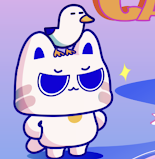Task 3 / Type Exploration and Application
Bachelor of Design (Honours) in Creative Media
Advanced Typography GCD 61004
Class Summary
Prepare a proposal with three ideas for Task 3.
WEEK 10
When the Task 3 proposal is approved, get start to digitise uppercase
letters as well as complete it by next week. Besides, the Task 2
submission date will be on 21st Friday.
WEEK 11
1) Do not "Round", click on "Keep".
WEEK 12
Adjust side bearings to all letters & punctuations, refer to the
chart provided in Teams. Get started preparing the font presentations
(5 artworks; 1024 * 1024px, 300ppi)
Complete font presentations and continue working on font applications (5 artworks, size subject to the application but should not exceed 1024px in width and height, 300ppi). Update Task 3 Eportfolio and this will be submitted in the next week's class as well as the final compilation & reflection.
Instruction
Use the knowledge and experience gained from exercises, lectures, readings, and software skills to complete the program tasks. Let the knowledge guide your decisions for your final project.
1. Develop a font that addresses a problem or fits into a field of interest such as graphic design, animation, new media, or entertainment design. The final outcome should be a fully generated font (.ttf) with an application.
2. Explore the use of existing letter forms in areas of interest, understand their existing relationships, identify areas for improvement, and explore solutions or combinations that might add value to existing letter forms/letters. The result is a fully generated font (.ttf) with the application.
3. Experiment. In order for your idea to qualify as an experiment, it must be new and unique - the materials used could be 3-dimensional, digitally enhanced, edible, unusual, printed music videos or fine art. End result: Defined by students.
To be more effective, research your field, understand how fonts are used and identify weaknesses. Then, offer creative solutions or add value. The end result may be a designed font and its application, an enhancement to an existing use, or the output of an experiment. Present your work in any format relevant to the problem you want to solve: animation, 3D, print, environment, projection, film or game title, music video or using different materials.
Proposal of my ideas. After discussing with Mr. Vinod, I decided to go with idea 2 as my Task 3, which is to redesign the Jokerman Font.
| Fig 1.1 Proposal Slides |

|
|
|

|
|
|

|
|
|

|
|
|

|
|
Fig 2.7 Dots Connections (left: version 1.0; right: version
2.0) |

|
|
|

|
|
Fig 3.1 Lowercase letter version 1.0 |

|
| Fig 3.2 Lowercase letters structural adjustments |

|
|
|

|
|
|

|
|
Fig 4.2 Full letter final outline version |

|
|
Fig 4.3 Numerals and punctuations final version |

|
|
Fig 4.5 Fontlab side bearing |
This part was unexpectedly hard for me? Since I'm improving the font, I don't have a specific theme for my font. At first I thought my font was a bit childish because the glyphs were a bit playful. So at first I was thinking about whether to focus on children's products, but when the mockups came out, I looked back and forth at my presentation and application, and I felt baffled as my font didn't seem to showcase as well as I expected.

|
|
|
| Fig 6.12 Task 3 Final Outcome PDF |
WEEK 9
General
-
Specific
Good to go with your Idea 2.
General
- create and follow the grid and structure, and ensure that each strokes have the same width. - make sure the artboard should be 1000 points, and the fonts will be within the height. And the lowercase should be 500 points.
Specific
WEEK 11
General
Make sure both uppercase and lowercase have the same width.
Specific
Overall the uppercase and lowercase look good, remember to do the number and punctuation.
WEEK 12
General
-
Specific
Be careful when merging paths, make sure that they are completely merged without any gaps. Otherwise you will have trouble when importing into the FontLab.
WEEK 13
General
-
Specific
The design of the font presentation should not be too repetitive, and try to make some different designs. To avoid this, you can seperately design an artwork just for your number. For the applications, try to do the mockups such as personal branding or signage etc.
Reflection
Experience
Working on Task 3 is both challenging and rewarding. From the proposal stage to the final font demo, I had to navigate a variety of design decisions and software tools. The digitizing process in Adobe Illustrator and adjustments in FontLab had improved my technical skills and attention to detail.
Observation
Throughout the task, I observed how important it is to maintain consistency in letter form. As I progressed, the importance of structure, side bearings, and visual harmony became apparent. The feedback sessions with Vinod sir were very helpful in refining my designs and understanding the nuances of typography.
Findings
An important finding is the balance between aesthetics and functionality. Although my initial designs were complex, simplifying them without losing the character of the typeface was key. Additionally, the final application reveals the versatility of my typefaces, proving that thoughtful designs can suit a variety of themes and uses.
Further Reading




































Comments
Post a Comment